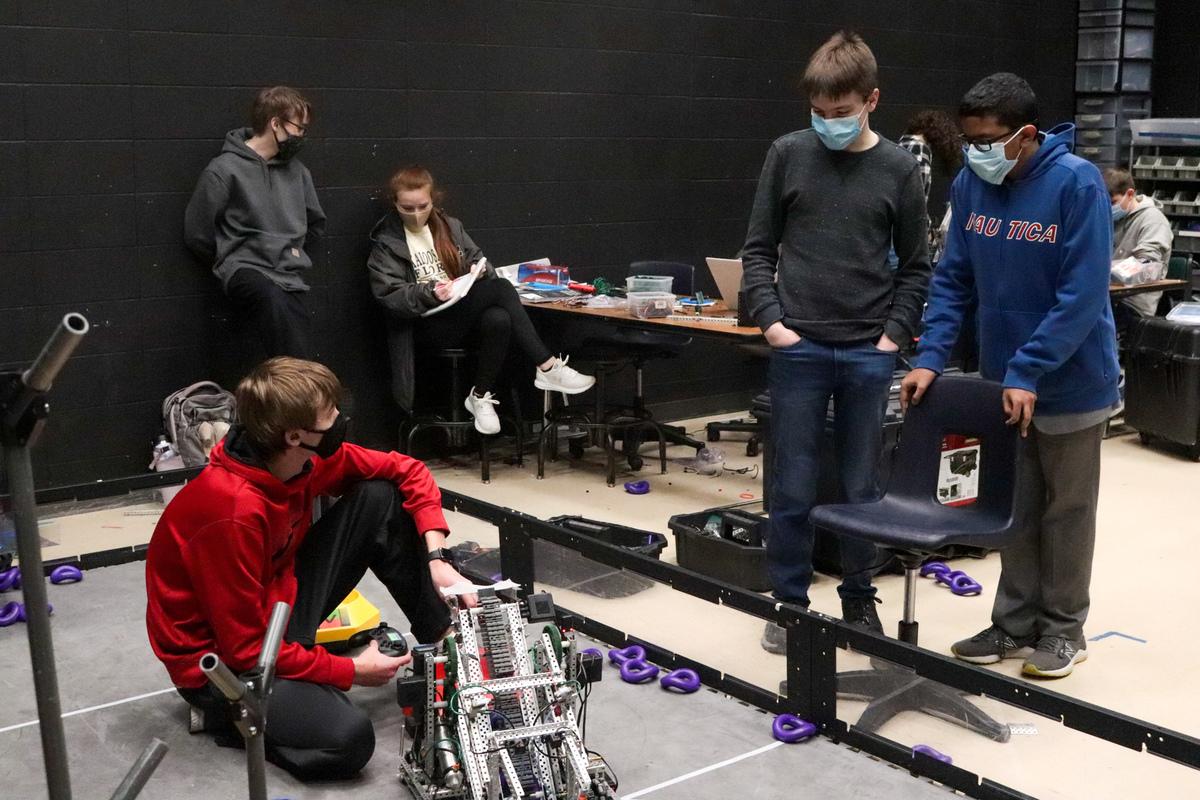
3 minute read
Task Masters
photo by Mary Demaro
By Mary Demarco, News and Sports Editor
Advertisement
After a second place win in Worlds, the world-wide competition for all robotics teams, there’s no fear that the ZCHS robotics team will reach state with this new season of competition. Each year, world-wide, there is a set task and goal for robotics teams. The task this year has students designing robots that are able to pick up mobile goals (items) and move them to a certain area. Matt Walter, Robotics Club sponsor, explained that the object of the game is to move those mobile goals onto one side of the field. Earning points in the game is based on how many of the mobile goals each team gets on their side. They get even more points if those goals are on certain platforms as well as if the robot is balanced on the platform. Although there are about eight different groups that participate in the same goal, one group specifically interviewed had five members: juniors Thomas Wallbank, Olivia Mulholland, Andrew Kachur, Mayank Patibandla and senior Jacob Walter. Each team member has a specific task that when put together with the other members’ tasks gives way to a functional robot. One quintessential role within the team is the coder. Without the coder, the robot wouldn’t be able to carry through with the task. For this particular group, Patibandla is the one for the job. “I write the code and make sure whenever the driver inputs something into the controller, that the robot does what it’s supposed to, and the right motor turns on,” Patibandla said. “I also make the autonomous routines for the skills.” Many of the skills, like Patibandla’s, take years of experience to master. “I’ve been coding for over a decade now,” Patibandla said. “So to do it on a robot, it’s not much different. I’ve had experience with [normal coding] but building [a robot] is a little more complex.” Meanwhile, J. Walter builds the physical robot, giving life to the coding. While many different prototype ideas are shared online and throughout the club, problems are bound to happen no matter the project. “It’s through a lot of trial and error as well,” J. Walter said. “Last year, we had problems with the wheels tilting and not driving straight. But this year, we’ve more or less made sure that that won’t happen based on our previous experiences.” With so much going on between just two of the team members, someone has to keep track of everything going on. That’s where Mulholland comes in. “I’m what you would consider a documentation specialist,” Mulholland said. “I do the notebooks. I record everything, all the changes to the robot and what we need to improve.” Without her documentation, there would be many loose strings attached to the project and ideas forgotten because no one was there to keep things in order. Finally, it all comes together with the person who actually controls the robot during the competition. That responsibility is left up to Kachur. “I’m the one that actually drives and competes against other teams after the robot is done building,” Kachur said. “I drive and try to score as many points as possible.” Without each person on the team, there would be a missing factor in the equation. Finally, on the day of the competition, things become very different than what one would expect of any match for sports or robotics. “When you go to compete, you get this list of matches, and you see all these groups that you’re randomly paired up with,” M. Walter said. “Then you have to go out and talk to them, and find out what they’re good at, what they’re ready to do, and what strategy you could create with that group for your upcoming match.” In the end, all of the work leads up to the state competition, and for some, Worlds. Unlike other randomized competitions, teams actually get to pick who they want to be paired up with. “We really prepare for state,” J. Walter said. “We’re nowhere near being the best team in the state. But once we get our robot built, we’re up there.”









